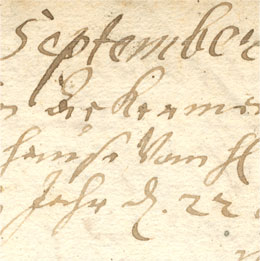What do we know about the Lihula Church pulpit made by Christian Ackermann?
We do not know exactly what the pulpit of the old Lihula Church from Ackermann’s workshop looked like: the baroque pulpit was not brought over from the old church to the new place of worship completed in neo-Gothic style in 1878. Instead, a new pulpit in neo-Gothic style was acquired that fit in better with the church’s overall appearance. Yet thanks to the fact that the local master F. Lauberg made use of the figures from the old pulpit to decorate the new pulpit, it can be said: Ackermann carved at least five figures for the corpus of the pulpit of Lihula Church: Moses, the Apostle Paul, Aaron, Christ ruling and blessing the world, or Salvator Mundi and John the Baptist (lost).
It is possible that a statue of Peter was also originally beside Paul, as is the case in several of Ackermann’s pulpits and retables. The appearance of a statue of Aaron is exceptional in Ackermann’s oeuvre, as are the appearance of Moses and John the Baptist on the pulpit’s corpus – generally speaking, Moses is either a supporting figure of the pulpit or is on the retable together with John the Baptist. This kind of selection of characters from the Old and New Testaments for decorating the pulpit’s corpus was most likely proposed by the customer who commissioned the Lihula pulpit with the approval of the pastor.
Thanks to photographs taken in the 1930s of finds from the Lihula Church “broom closet”, it can be added that naturalistic flower garlands in foliage separated the side panels of the pulpit’s corpus and/or stair balustrade from one another. Puto-head shaped reliefs also adorned the pulpit.
Based on analogies, it can be assumed that the pulpit’s corpus was supported by a pillar. The baroque pulpit evidently also had a polygonal sounding board, at the tip and corners of which stood figures. The pulpit from Ackermann’s time together with its figures and ornamentation was very likely covered with polychromy, which has almost completely perished due to poor storage conditions and/or the preparations for when the pulpit and figures were later painted over (scraping off old, loose paint).
Based on the style of the surviving figures of the baroque pulpit and of its details visible in historical photographs, Ackermann made the pulpit for Lihula Church at the end of the 1690s or the outset of the 18th century.
Vaata blogist ka sissekannet uuringute kohta
